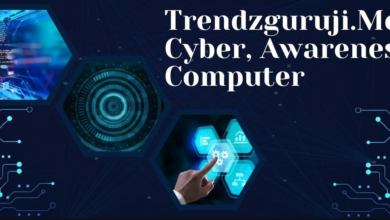How Does Passive Liveness Foster Secure Digital Authentication?

As digital technology advanced, it had a variety of effects on ongoing corporate development and expansion. But it also presented a number of difficulties for companies, including significant financial losses and security risks. Businesses have to face a big loss because of the increased frequency of cyberattacks, companies must employ strong security protocols and quick strategies to spot scammers. For remote processing companies, a smooth and safe onboarding procedure for partners and users is required.
Moreover, liveness detection technologies may identify people before onboarding, they allow enterprises to secure remote working. This system uses pre-trained models from artificial intelligence and machine learning to evaluate the type of identification proofs presented and conduct automated checks.
Significance of Passive Liveness
Passive liveness checks employ advanced technologies and intricate algorithms to efficiently verify persons without requiring them to perform certain tasks by looking at the faces of the provided identities. Passive liveness employs complex algorithms to evaluate unique face features in order to validate a user’s identification, as opposed to active liveness check, which relies on subtle movements or micro-expressions.
When users expose their faces or appear in front of the cameras, permission is acquired. Advanced technology uses extensive facial data or skin texture analysis to detect a person’s live presence. In short, passive liveness checks determine whether the identity claimant is a 2D flat representation or a real person.
How Does it Foster Better Security?
By adding an additional layer of protection against deepfakes and spoofing, passive biometric verification improves system security and makes it easier for clients to authenticate themselves.
- Passive liveness detection enhances the user experience by confirming the user’s identification solely by looking at facial data, doing away with the need for a drawn-out verification process. Users like the simple and convenient authentication technique.
- Systems are safeguarded against identity spoofing and mask attacks thanks to passive liveness detection. Passive liveness checks actively detect fake identities, limiting unlawful access to services, thus if fraudsters gain unauthorized access to users’ biometric data, they will be prevented from accessing the system.
- It is widely acknowledged that passive facial liveness detection is a safe and trustworthy authentication technique. In order to prevent unwanted access to data, the verification process is based on the assessment of 70–80 points in face data, which are difficult to duplicate or fake.
KYC and Passive Liveness Detection
The solution speeds up the customer onboarding process and aids the business in more efficiently onboarding clients by removing unnecessary steps from the verification process. Passive liveness checks also improve user convenience and foster greater confidence in businesses that employ this technology for secure authentication. Significantly reduced fraud rates streamline the KYC process and increase operational efficiency for businesses and financial institutions.
Passive biometric verification reduces the likelihood of illegal conduct by acting as a safeguard against fraud and spoof efforts. Using advanced algorithms, passive liveness biometrics evaluate biometric data in real-time, swiftly spotting unusual activities that authentication systems usually overlook.
Preventing Frauds
Large databases of identities and fraudulent efforts are used to train algorithms used in liveness detection, which allows them to identify irregularities or inconsistencies instantly. Cybercriminals employ advanced techniques to steal or falsify biometric information, and then utilize the information they obtain to further their malicious goals. By examining and comparing the supplied identity with registered data, passive facial liveness detection reliably authenticates real people while identifying fake identities by interpreting irregularities or discrepancies.
Limitations and Challenges
Despite its advantages, the technology is facing a number of difficulties. Environmental elements that can impact the technology’s performance include poor lighting, camera quality, and resolution. The face cannot be accurately detected in poor lighting. Furthermore, the system may reject the user if they are not motionless and make unnatural movements throughout the detection process. The process can also be impacted by facial shapes.
Conclusion
For businesses and financial institutions, passive liveness detection is a useful and safe technology that effectively expedites the KYC procedure while providing increased security. This advanced technology accurately confirms the identification of actual people, enhancing user onboarding and login experiences while reducing the risk of fraudulent activity. The technology is constantly evolving and is expected to have many exciting uses in the years to come.



